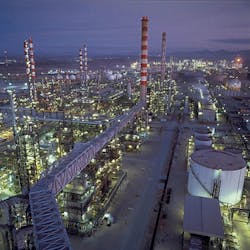Tips on Choosing an Automation Architecture
The advancing power of microcontrollers makes it much easier to do many tasks, but sometimes these advances make life more difficult. It’s becoming more difficult to decide whether to adopt distributed control systems or programmable logic controllers.As equipment designers leverage the soaring capabilities of microprocessors, the strengths and weaknesses between a DCS and a PLC have become blurred. At the same time, the adoption of flexible manufacturing has also transformed some of the requirements.These shifts make it more difficult to pick an architecture while also making it more likely that companies will adopt hybrid approaches. Understanding this merger of technologies is important as companies invest in new technology.Picking the right technology is critical. It can help companies reduce the total cost of ownership while making systems maintainable and upgradeable. Seven basic questions, which are fully detailed in a white paper, detail the key points in the decision-making process. After first setting the stage by examining the type of product and the basic techniques used to make it, equipment buyers need to look at the cost of downtime. When product costs are low and downtime doesn’t add much cost or damage the process, PLCs are the likely choice. When the value of a batch is high, either in raw material cost or market value, and downtime causes potentially dangerous and damaging conditions, DCS may be a better choice.The next step is to determine the heart of the system. In some plants, the PLC runs the show, containing all of the logic to move the product in through the assembly line. In others, especially those where operators can’t actually see the product, the HMI is critical. It provides a complete window into the process, helping operators monitor and control the processes throughout the plant.Another big factor is to determine what the operator needs to be successful. It all boils down to the vital need to have an operator "in the loop" versus "out of the loop." In PLC environments, the operator’s role is usually to manage exceptions. Many ‘lights out” facilities use PLCs, alerting operators only when alarms are issued. In DCS plants, operators are continuously making decisions and interacting with processes. The operator's process knowledge is often critical to operational excellence, as he or she changes setpoints, opens/closes valves, or makes a manual addition to move a batch to the next stage of production.System performance, particularly the speed of logic execution, is another important aspect in the decision-making process. PLCs reign in high-speed applications like motion control and motor control that require scan rates of 10 milliseconds or less. The DCS is typically slower, with regulatory control loops that normally scan in the 100 to 500 millisecond range. In applications using final control elements like valves, faster responses can cause damage. Analog control is another facet of system performance. DCS was originally designed for the analog control market, but it doesn’t have a lock on this area. PLCs are becoming more capable in this area, delivering simple to complex PID control. However, the DCS is clearly the choice for applications with a large amount of advanced analog control, including cascade loops, model predictive control, ratio, and feedforward loops.The degree of customization needed in a facility is another issue where there are major differences between the PLC and the DCS. PLCs were originally designed to be a jack of all trades, delivers a "toolkit" of functions and elemental building blocks that can be custom-developed and chained together. PLCs may control a palletizing machine today and a laser cutting lathe tomorrow. They also make it easy to integrate functions and products into a seamless architecture.On the other hand, a DCS usually offers pre-engineered solutions consisting of standards, templates, and extensive libraries. A DCS typically trades unlimited functionality for repeatability and dependability. Customization can create compatibility problems, so changes are rare.The final question centers on engineering expectations. There are major differences: the PLC is generally controlling a machine, while the DCS is normally controlling the plant. Integrators and engineers often open the PLC "toolkit," roll up their sleeves and start programming.DCS engineers, on the other hand, typically use a "top-down" approach for engineering, putting significant effort into the upfront design. Focusing on upfront design minimizes costs, compresses project schedules, and creates applications that can be maintained by plant personnel over the long term.As they answer these questions, many managers find they need a hybrid application. One researcher called hybrids “an architectural marriage of the PLC simplicity and cost with the sophisticated operator displays, alarm management, and easy but sophisticated configuration capabilities of the DCS.” Most market observers suggest that managers find suppliers that have worked in the field for years. It takes time to build domain expertise in each of these fields. As the stereotypes of the past are replaced, the convergence of PLC and DCS is opening up a new set of options. For example, hybrid applications and process plants that traditionally used PLCs to control electrical infrastructure components such as motors, drives, and motor control centers can utilize a DCS for regulatory control.Those who need hybrid applications may need a process control system which combines the best of the PLC and DCS and a supplier who can provide a common platform that features both discrete and process capabilities. Please click here for information on Siemens SIMATIC S7 controllers.

